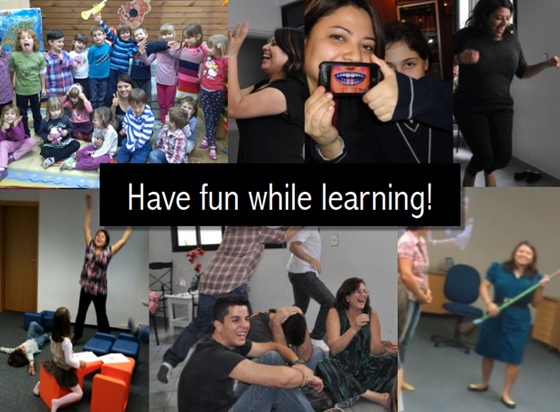Laughter isn’t just a fun part of life—it’s a powerful teaching tool, especially for language learners! In the TESOL classroom, humor helps create a relaxed, welcoming environment where students feel comfortable practicing and making mistakes. When students laugh, they connect with the material and each other, making lessons more memorable and enjoyable. Here’s how to engage students with humor in your TESOL classroom and turn everyday language practice into a joyful experience.
1. Start with Icebreakers
Breaking the ice with humor sets a friendly tone and makes students feel at ease. A well-placed joke or funny activity can make introductions more engaging, especially for shy students. Here are some effective icebreaker ideas:
- Two Truths and a Funny Lie: Ask students to share two truths and one humorous lie about themselves. It’s fun and helps everyone learn a bit about each other.
- Silly Tongue Twisters: Tongue twisters are not only funny but also a great way to practice pronunciation. Start with classics like “She sells sea shells by the sea shore,” and move on to creative ones like “Unique New York.”
Tip: Be ready to laugh along with students! Your participation will encourage them to open up and engage.
2. Use Humor to Teach Vocabulary
Learning new words can be challenging, but adding humor makes vocabulary memorable. You can create funny example sentences that illustrate the meaning of words in a way that sticks. For example, when teaching “clumsy,” say, “Imagine a penguin wearing roller skates—now that’s clumsy!”
Activities:
- Cartoon Captions: Show a funny cartoon and ask students to write captions using new vocabulary words.
- Silly Sentences: Ask students to create sentences with as many vocabulary words as possible. The goal? The silliest sentence wins!
Tip: Encourage creativity! When students invent their own funny sentences, it reinforces word meanings and helps build confidence.
3. Embrace Jokes and Puns for Language Practice
Jokes and puns play with words and meanings, making them ideal for teaching vocabulary, homophones, and idioms. Start by explaining a few simple jokes or puns, and then have students create their own. Not only does this introduce them to cultural nuances, but it also strengthens comprehension and pronunciation.
Example:
- “Why did the tomato turn red? Because it saw the salad dressing!”
- “What do you call a bear with no teeth? A gummy bear!”
Tip: Explore puns as a fun challenge. Ask students to come up with their own or find puns related to current vocabulary. The laughs (and learning) are guaranteed!
4. Role-Play with Comedic Scenarios
Role-play is a powerful technique for language learning, and adding humor makes it even more engaging. Have students act out silly scenarios that involve specific vocabulary, idioms, or grammar structures. For example, one scenario could be “ordering a pizza with increasingly strange toppings,” or “trying to explain a complex concept while hiccupping.”
Example Scenarios:
- Lost Tourist: One student is a confused tourist, while another gives “helpful” (but amusing) directions.
- Superhero Interview: Have students role-play a job interview where they pitch themselves as superheroes, explaining their “powers” using descriptive language.
Tip: Encourage students to exaggerate and have fun with their roles! Humor in these scenarios reduces performance anxiety and helps students feel comfortable speaking.
5. Emphasize Idioms and Expressions with Humor
Idioms can be tricky for English learners, but teaching them through humor makes them easier to remember. Introduce an idiom, explain its literal and figurative meaning, and use a funny story or visual to bring it to life.
Examples:
- “It’s raining cats and dogs”: Imagine an actual downpour of cats and dogs for some laughs!
- “Bite the bullet”: Picture a person trying to chew on a bullet—silly, but memorable!
Activity:
- Idiom Skits: Have students act out idioms literally, then explain the real meaning. It’s a fun way to clarify meanings while creating memorable connections.
6. Use Meme Creation for Writing and Comprehension
Creating memes is an exciting and humorous way for students to practice English while expressing themselves. Provide a popular image, and ask students to come up with a funny caption based on a recent lesson topic. This activity combines humor with writing practice and helps students develop a more creative approach to language.
Activity:
- Language Meme Challenge: Divide students into groups and have them create memes based on vocabulary, idioms, or grammar. They can present their memes to the class, explaining the humor behind them.
Tip: Display the memes in the classroom or online to create a sense of community and shared learning.
7. Incorporate Funny Videos or Short Skits
Humorous videos or short skits engage students and provide real-life examples of language usage, especially in conversational contexts. Choose videos that are language-appropriate and culturally sensitive, and follow up with discussion questions to explore vocabulary and context.
Activity:
- Video Reaction: Show a funny video clip and ask students to describe what happened, summarize the plot, or explain why it was funny.
- Student Skits: Let students create their own short skits based on a funny scenario, using vocabulary and grammar from recent lessons.
Tip: Use humorous videos sparingly and ensure they align with lesson goals. Follow up with vocabulary explanations or discussion prompts to reinforce comprehension.
Why Humor Works in the TESOL Classroom
Laughter lowers anxiety, creates a positive environment, and makes lessons memorable. By incorporating humor, TESOL teachers can reduce language learning barriers, encourage participation, and build students’ confidence. When students feel comfortable laughing, they’re more willing to speak up, try new things, and engage deeply with the language.
So, the next time you’re planning a lesson, consider how you can add a dose of humor. Whether it’s through funny vocabulary activities, silly role-plays, or student-created memes, humor has the power to transform the TESOL classroom into a lively and effective learning space. Give these ideas a try and watch your students’ enthusiasm and language skills grow!



